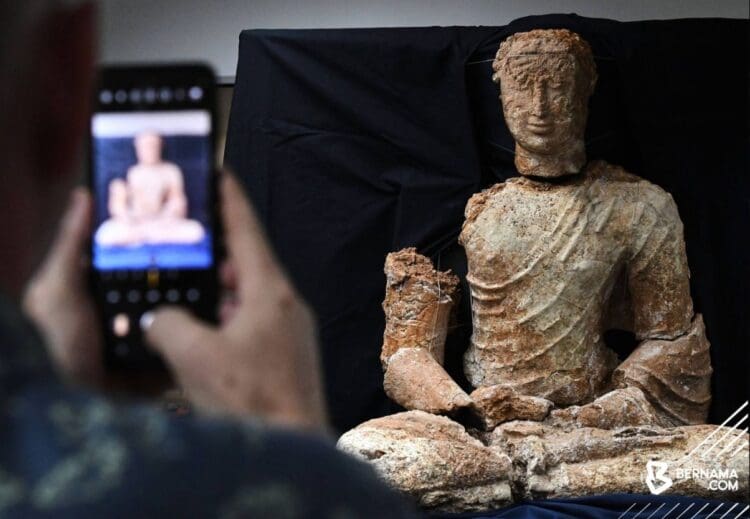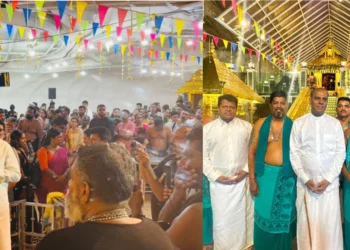In a remarkable discovery, archaeologists at the Bukit Choras site in Yan, Kedah, have discovered a life-sized Buddha statue dating back to the eighth or ninth century. This significant find, which is believed to be older than Cambodia’s Angkor Wat and Indonesia’s Borobudur, sheds new light on the ancient Kedah Tua civilization.
The discovery was made by a team from the Global Archaeological Research Centre (PPAG) at Universiti Sains Malaysia (USM), led by chief researcher Nasha Rodziadi Khaw. This collaborative effort involved the National Heritage Department (JWN) and USM, highlighting the site’s importance as a religious and cultural center in Southeast Asia.
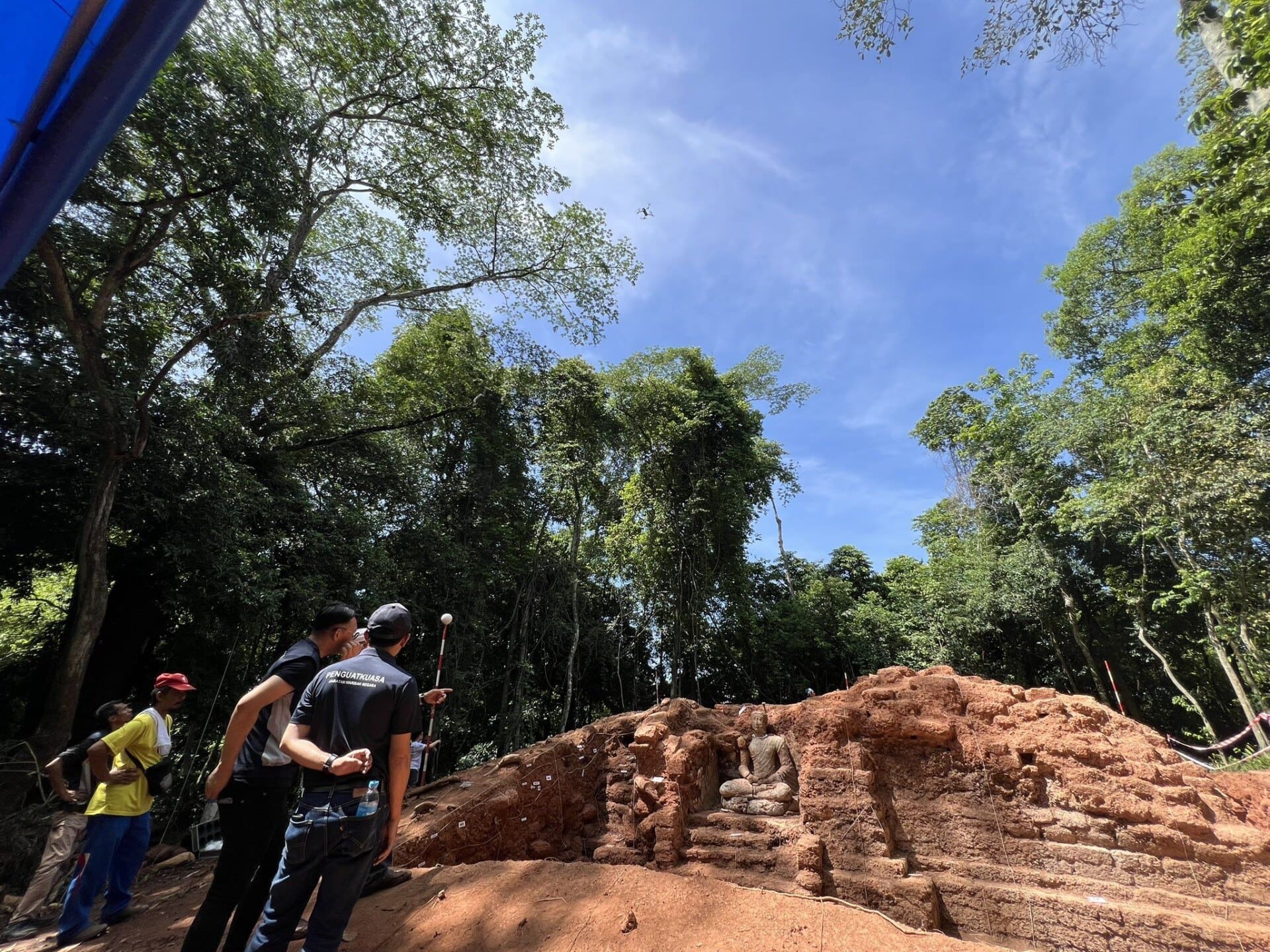
The Buddha statue, made of stucco (a mixture of lime, water, and sand), was found at the temple’s north wall along with a Sanskrit inscription and fragments of earthen pottery. These artifacts provide invaluable insights into the religious practices and cultural exchanges of the time.
Tourism, Arts and Culture Ministry secretary-general Datuk Roslan Abdul Rahman expressed the significance of this find, stating,
“The discovery is older than the Angkor Wat and Borobudur. This is interesting for us.”
He added that the statue is temporarily housed at the PPAG USM laboratory for conservation and further study.
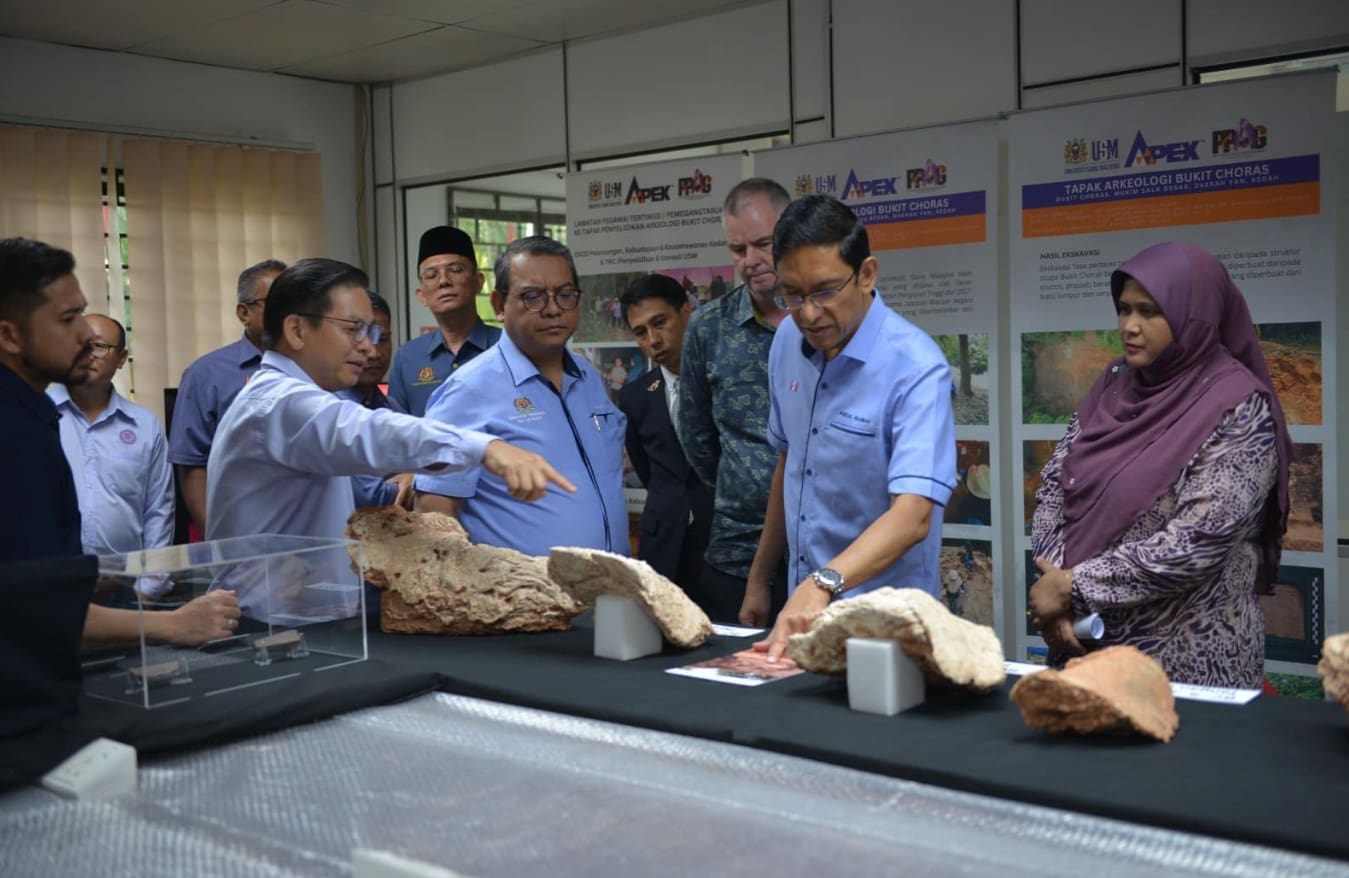
The research at Bukit Choras has been ongoing since April, with the latest phase revealing not only the Buddha statue but also the north and west walls of a temple structure, showcasing unique architectural elements. The site has so far found three inscriptions containing Buddhist mantras, further underscoring its historical and spiritual significance.
Roslan also mentioned the potential for developing Bukit Choras as an archaeotourism destination, similar to Angkor Wat and Borobudur. However, decisions on whether to exhibit the discoveries in a museum or develop the site for tourism are pending completion of the thorough study by USM.
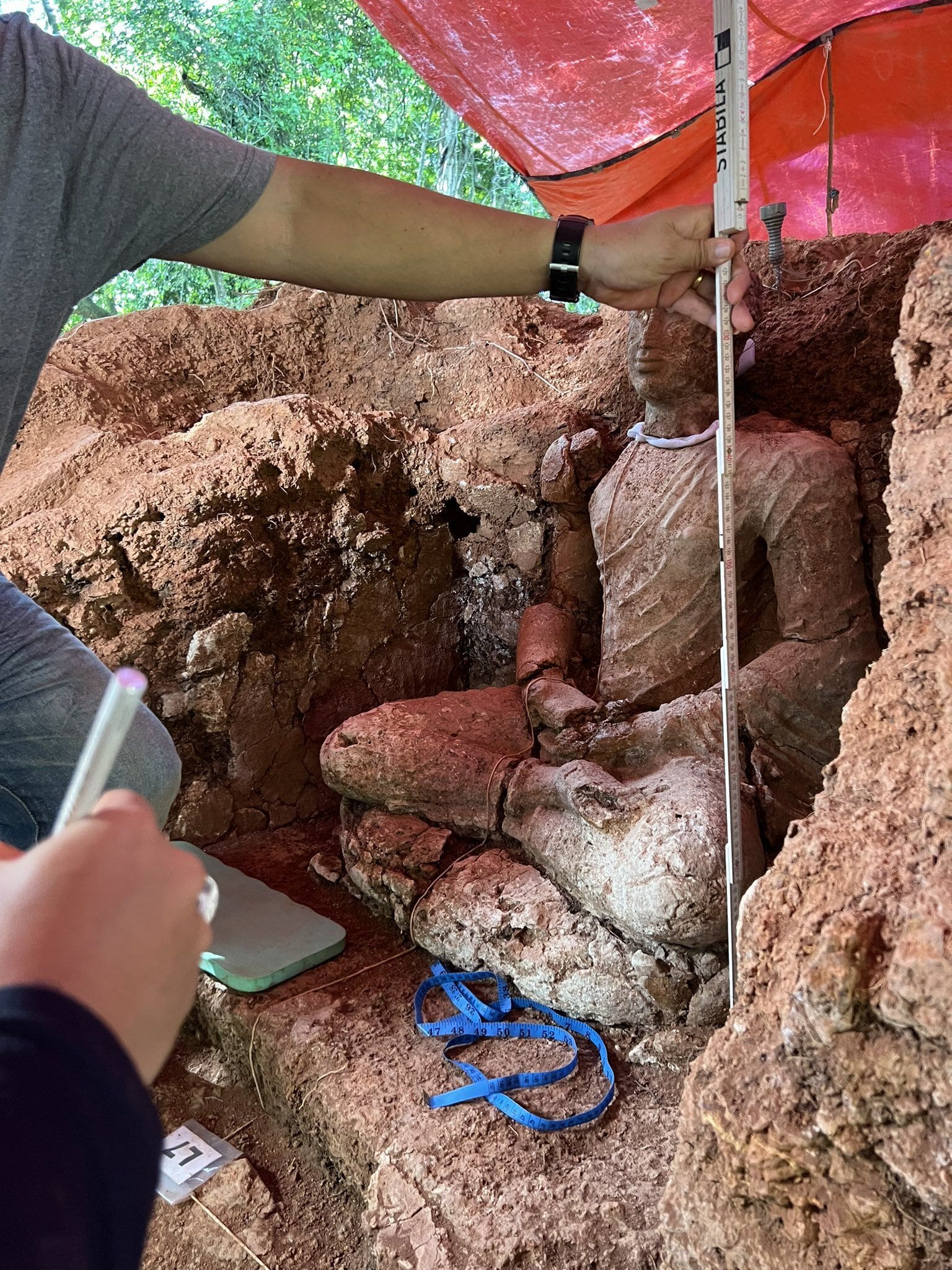
This discovery highlights Kedah Tua’s strategic position in Southeast Asia’s maritime trade routes and its rich cultural heritage. The ongoing research promises to reveal more about this ancient civilization and its connections across the region.
In conclusion, the discovery of the Buddha statue at Bukit Choras not only adds to our understanding of the Kedah Tua civilization but also positions Malaysia as a significant player in the region’s historical and cultural narrative. The anticipation surrounding the forthcoming exhibition of these artifacts promises to attract both scholars and tourists, eager to explore this ancient heritage.
Sources: TRP , Malay Mail
Follow us on Instagram, Facebook or Telegram for more updates and breaking news.


